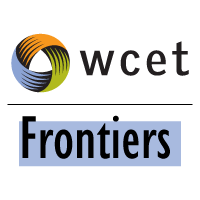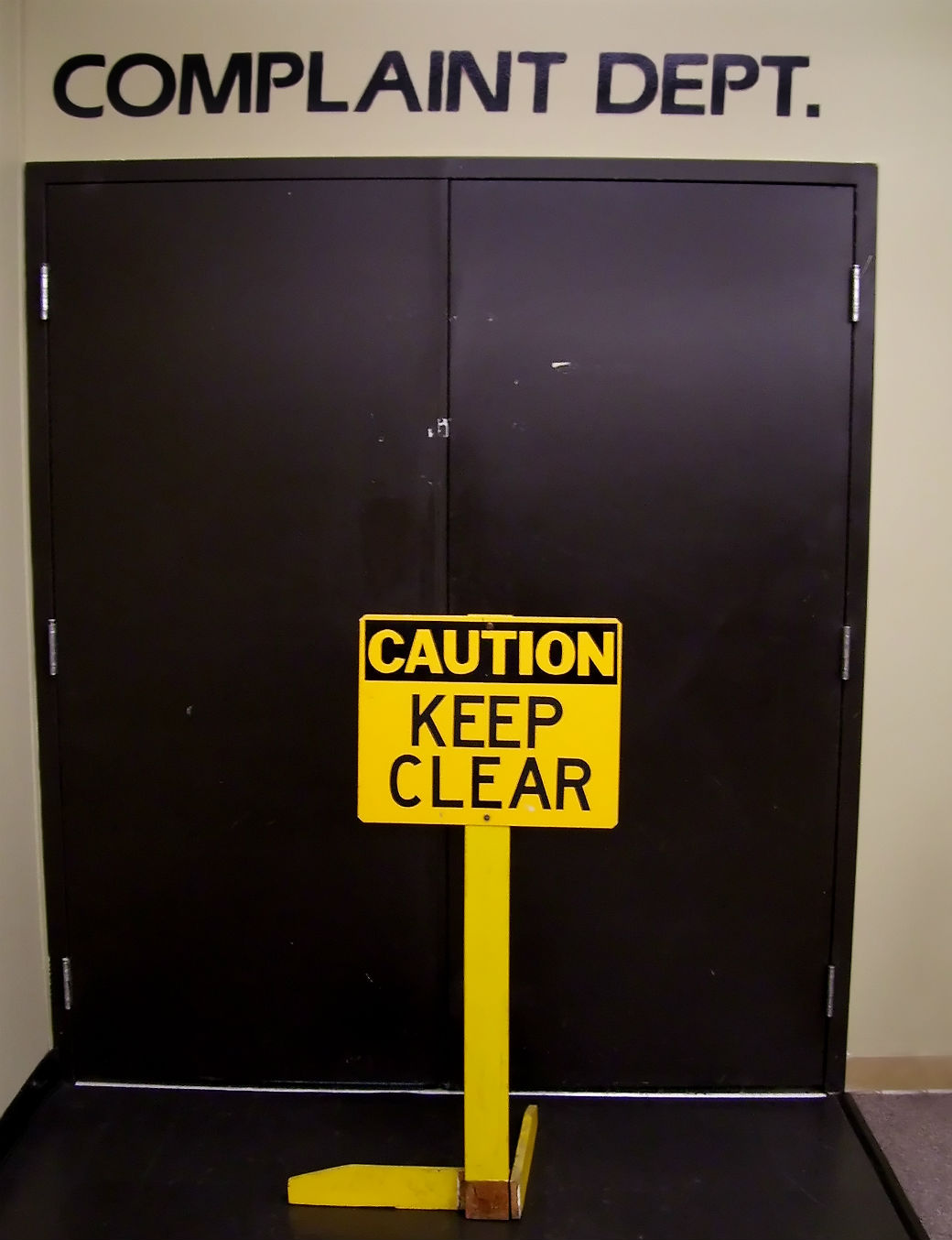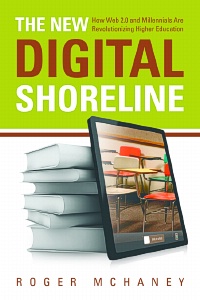Increased affordability is a hot topic for 2012, but just how much affordability can higher education afford? How do we increase affordability and what are the pitfalls? The Forging the Future workshop, developed and directed by Myk Garn, Southern Regional Education Board; Hae Okimoto, University of Hawai’i System; Rob Robinson, University of Texas – San Antonio focused on reducing the cost of the baccalaureate degree. Following is a summary from the 2011 Forging the Future workshop held in conjunction with the WCET Annual Conference, October, 26-29, 2011 where experts analyzed the affordability topic in depth. View the full report.
Mark your calendar for the 2012 Conference and Forging the Future 2, October 31-November 3, 2012.


This fall we have convened over 60 educational technology leaders from more than 30 states through two separate workshops, in an examination of what role technology can play in making Baccalaureate degrees significantly more affordable. Using the target price of $10,000 suggested by Texas Governor Rick Perry in 2011, and working in teams, the experts identified the issues, trends, and uncertainties surrounding affordability today – and looked at events that could potentially alter affordability in the future.
The results of the investigation give us both tactics that are immediately available to increase affordability using our current fiscal structures and suggest ways we can dramatically increase affordability in the future. In the former we can reduce the cost of a degree, in the latter, the time-to-degree.
Through Forging the Future, a full day workshop held in conjunction with the WCET Annual Conference in Denver, CO, October 26-29, 2011, participants (online higher education leaders from more than 20 institutions across the U.S.) delved into the possibility of the $10,000 degree. They were asked to rate the importance and predictability of the factors and the results were plotted to identify factors that were highly important and predictable (trends) and those that were highly important but less predictable (uncertainties).
Following are some of the highlights assimilated from both the Forging the Future workshop and the Southern Regional Education Board workshop also focused on the affordability topic.
Trends Impacting an Affordable Baccalaureate Degree.
In the face of increasing pressure for accountability and competition, universities can be expected to develop more partnerships among K-12 schools, community colleges, other universities, and external providers. Online learning, a competency-based curriculum, and advancement with mastery are the primary innovation trends that are already available in meeting the desired outcome of affordability.
Interestingly experts almost universally rejected developing a new entity with an express purpose of offering an affordable degree (the virtual university option). Apparently we have been down that road already.
Leading Trends Impacting Affordability
- Competition between public institutions and among public and for-profit institutions would increase.
- Legislative emphasis on outcomes and affordability will increase driven, in part, by the impact of the implementation of common core state standards in the K12 sector and the new generation assessments being developed to measure outcomes.
- Partnerships among K-12, community colleges, and universities are critical to degree affordability and will become more common. Partnerships with educational management organizations (EMOs) will increase in importance as well.
- Online learning options, driven by increasing needs to work, learn, and study where ever students are and whenever they want, will continue to increase. Shifting to digital content and establishing robust online student support services are critical to success.
- Implementation of competency-based teaching and learning models are critical to affordability and the emphasis will continue to grow
Uncertainties in Increasing Academic Affordability
- Economic outlook. Challenges of the “new normal” budgeting where current reductions will continue and in some cases worsen.
- Pressure from the public and policymakers are critical driving factors but the intensity of that pressure is not certain.
- The cost of purchasing (and developing) the technology needed to support or drive change is expected to be significant, but nobody knows for sure which technologies are needed nor what they will truly cost.
- The differential between the high speed at which technology is driving change across the education sector and the slow speed of cultural change at academic institutions give rise to significant concerns.
- Faculty attitudes, participation, and support are among the most critical factors in affordability. The role of faculty will increase over the next three years, but it is highly uncertain whether they will support or resist changes.
Tactics for Today
Because affordability is an issue with significant current implications for institutions, workshop participants identified several tactics that would be effective in reducing costs in the short term:
- Earning college credit in high school.

Image Credit: jscreationzs - Greater alignment between K-12 and higher education.
- Dual credit between K-12 and community colleges.
- 2+2 programs between community colleges and universities.
- Credit for prior learning.
- Conversion from textbooks to digital content.
Deep Concerns for the Future
The experts observed that, once you accept the premise of offering a four-year degree at a target cost of $10,000, you are stuck with a simple and depressing equation. No matter how clever or complicated the calculus or how you play the fiscal shell game of shifting costs among the campus, student, and state, the biggest reduction would need to be in costs of faculty. While technology could reduce costs modestly (such as through transition to digital OER content), reducing the cost of instruction is where the burden would fall.
This observation was captured in the inevitable conclusion, “If you want a cheaper degree…you need to get cheaper faculty.”
Towards a Better Solution (and Return on Investment)
As can be imagined, this was neither a palatable nor acceptable solution to the experts. And this is where the thinking got interesting. The affordability constraints academia deals with are epitomized in the “iron triangle” of cost, quality, and time. Adjusting one impacts the others.
Reexamining the strictures of the triangle, our experts chose to rethink not quality (as proxy for the cost of faculty) but time as the nexus for innovation. We need to change our concept of a baccalaureate degree from a credential awarded after 120 credit hours of instruction to a credential earned after 120 credits of demonstrated competencies. Key to this capability is developing the pedagogical infrastructure of competencies and correlated assessments that enable validation of learning and advancement upon mastery.
Technology will be an instrumental part of a competency-based model. Research shows technology enables students to learn at the same level of quality – in less time. When students can complete coursework in perhaps half the time, it now becomes conceivable to leverage technology to reduce the time to degree.
Strategies for Change
In summary, the most self-evident conclusion is that, if an institution is preparing to invest in a transformative change initiative, the best focus may not be to fund more faculty development of technology infused courses. The only “bolts on” technology (and its accompanying costs) to a model that is already affordability-challenged. The opportunity for changing the time factor in the baccalaureate process is real. It was revealed by the work of 60 experts this fall, that when an institution focuses on just four key actions they will provide the pedagogical infrastructure for true transformation.
These four actions are:
- Establish competency-based instruction across the institution.
- Develop assessments and robust assessment engines correlated to those competencies.
- Create the technological and analytical platforms that support independent, personalized learning paths for all students
- Implement the ability to advance individually upon mastery instead of by course or credit hour.
Observations
First the good news. Technology can help address affordability in the ways we do things now. Dual-credit, early college, 2+2 programs between community colleges and universities all are proven ways to reduce cost while maintaining quality. More importantly, the real potential lies in doing things differently…for most institutions. There are already successful examples of competency-based advancement upon mastery institutions (Western Governors University comes to mind).
And the bad news? Technology does not care if we succeed or not. That is the challenge. Can our culture move at the speed of technology? Is there a pace at which we can survive the revolution? The scenarios developed by the experts of the Forging the Future workshop tell us yes. Higher education is resilient, resourceful, and can actually be pretty innovative.
















